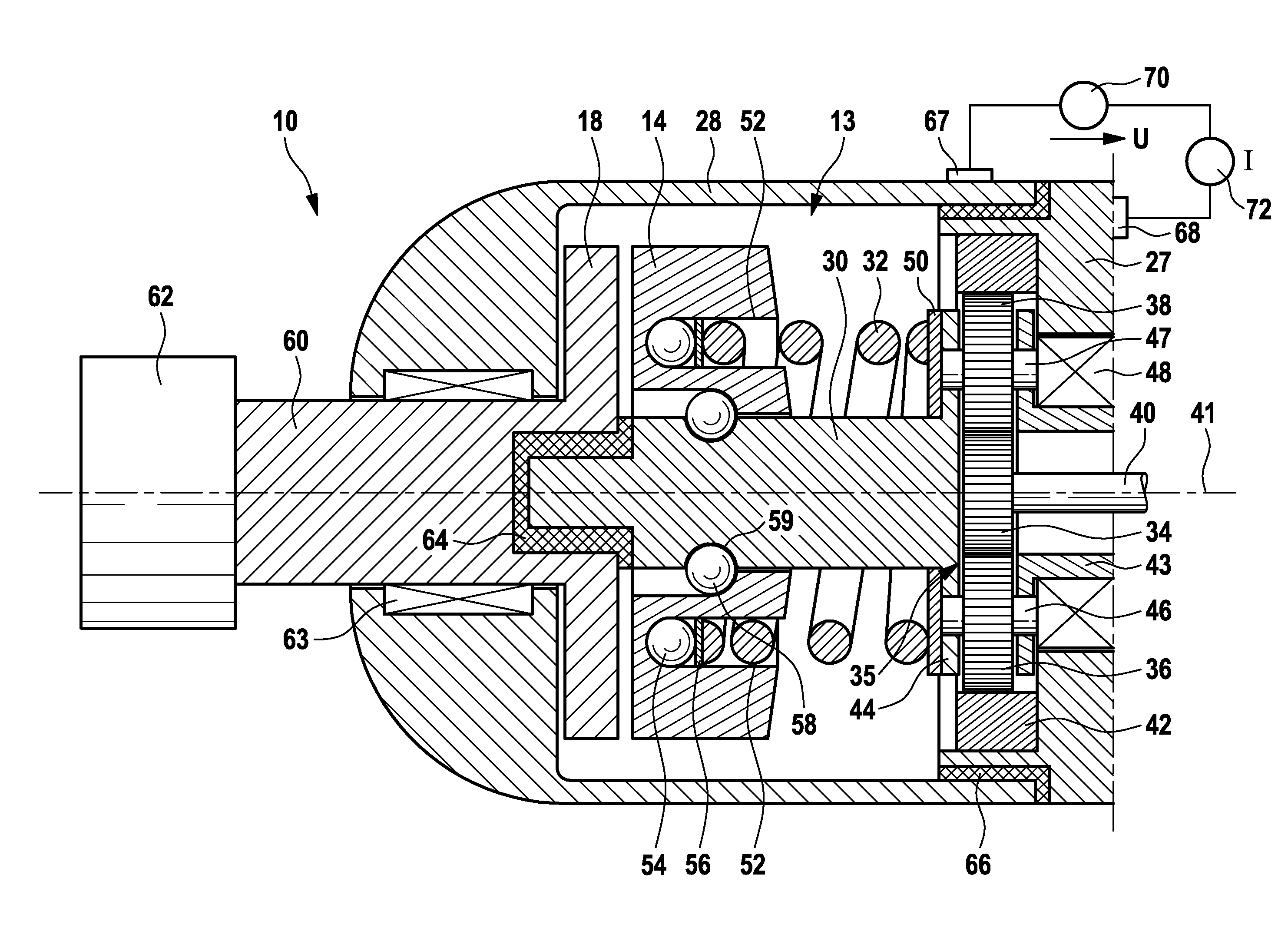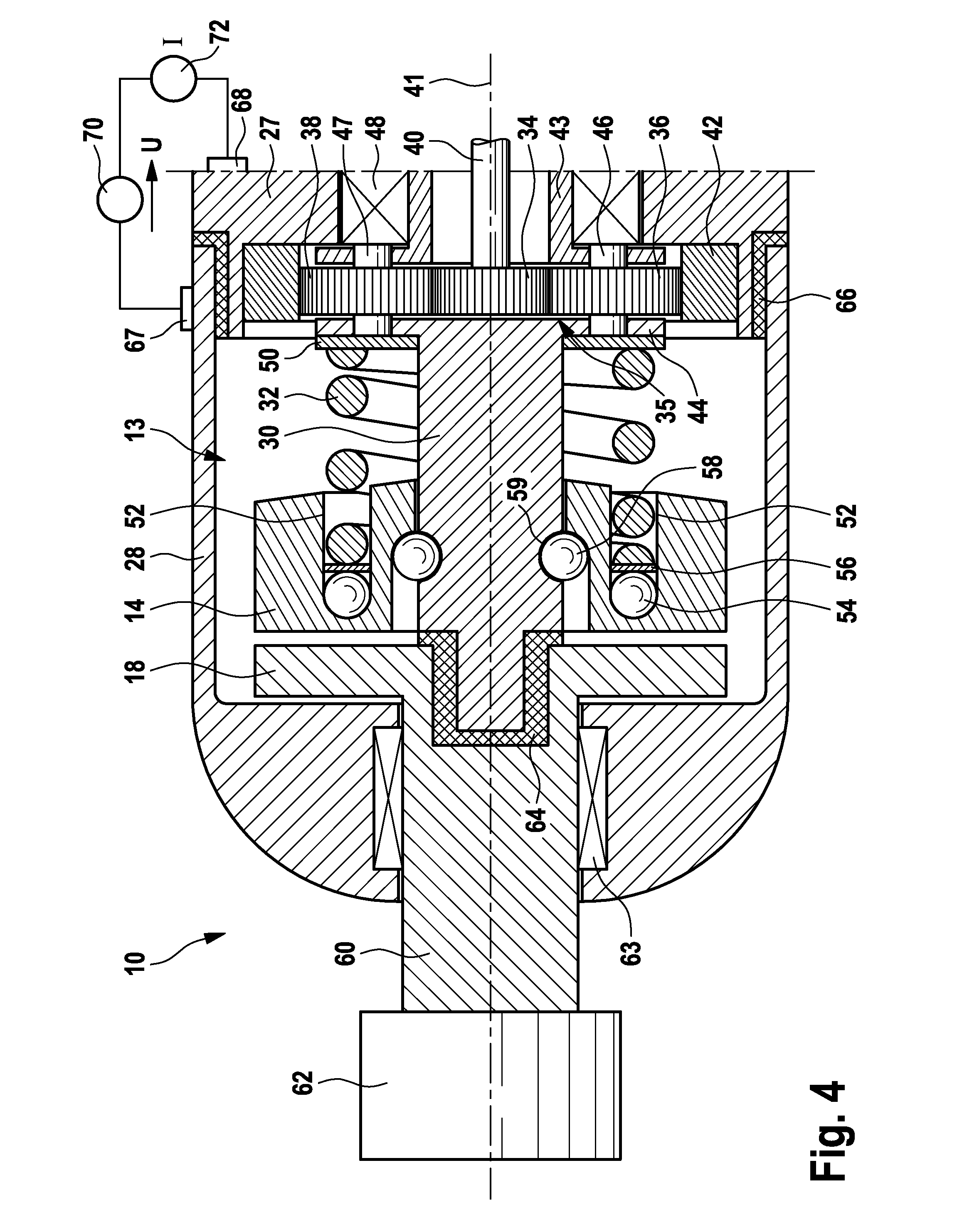Impact Screwdriver
- Summary
- Abstract
- Description
- Claims
- Application Information
AI Technical Summary
Benefits of technology
Problems solved by technology
Method used
Image
Examples
Embodiment Construction
[0046]FIG. 1 shows a simplified circuit diagram of an impact screwdriver according to the invention, which is designated as a whole by the numeral 10.
[0047]The impact screwdriver has a drive 12, for instance in the form of an electric motor which is coupled to a gear mechanism. The drive 12 drives a movably arranged hammer 14 which interacts with an anvil 18 in order to transmit a sequence of rotary impulses to the latter. Via an electric coupling 16 between the hammer 14 and anvil 18 the respective contact duration t between the hammer 14 and anvil 18 is determined and transmitted via a line 25 to a central controller 22. The anvil 18 is coupled to an output shaft 20 on which a tool such as a bit or a nut for tightening a screw connection is accommodated.
[0048]The central controller 22, which is preferably embodied as a microprocessor controller, controls the output P of the drive 12 via a line 23. Via an associated line 24, the rotational speed n of the drive 12 is sensed by the c...
PUM
 Login to View More
Login to View More Abstract
Description
Claims
Application Information
 Login to View More
Login to View More - R&D
- Intellectual Property
- Life Sciences
- Materials
- Tech Scout
- Unparalleled Data Quality
- Higher Quality Content
- 60% Fewer Hallucinations
Browse by: Latest US Patents, China's latest patents, Technical Efficacy Thesaurus, Application Domain, Technology Topic, Popular Technical Reports.
© 2025 PatSnap. All rights reserved.Legal|Privacy policy|Modern Slavery Act Transparency Statement|Sitemap|About US| Contact US: help@patsnap.com



